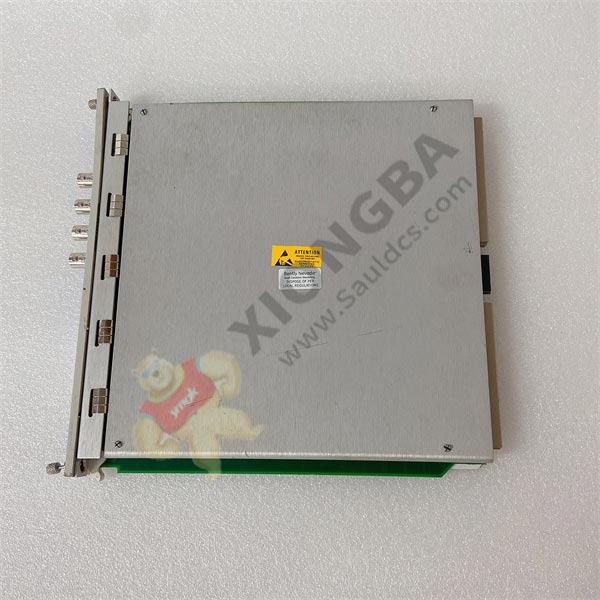Brand: Bently Nevada
P/ n:3500/08
Description: Fault Diagnosis connection panel
Origin: United States
Xiamen Xiongba provides 3500/40M DCS/PLC, Xiamen Xiongba Shan Ni for your quotation, and provide one-year warranty service.
3500/08 high quality affordable models.

3500/44M 176449-03
Xiamen Xiongba Electronic Commerce Co., LTD. (Zhangzhou Branch)
Unit 2009, Creative Center, 1733 Luling Road, Siming District, Xiamen, China
M: + 86 18059884797
Email :sales@xiongbagk.cn
Website:www.sauldcs.com/www.xiongbagk.cn
Failure: A large deviation of a system’s characteristics or parameters beyond the acceptable range, resulting in the degradation of the system’s performance.
Residual: the difference between the estimated system output value and the actual output value generated by the fault detection unit based on the relevant information of the normal operating system. When the system is fault-free, the residual mainly reflects the influence of unknown input disturbances such as external disturbances and model uncertainty on the system.
Fault diagnosis consists of three steps: detection, isolation, and identification.
(Fault modeling: according to the given conditions and the relationship between input and output, the control system fault model is established)
Fault detection: determine whether the control system has a fault and determine the time of failure;
Fault isolation: find the faulty component of the system and determine the location of the corresponding fault;
Fault identification: identify the fault online and estimate its size, this link determines the fault category and degree;
Fault Type:
Faults can be classified into the following three types according to the classification basis:
(1) According to the specific location of the fault, the fault can be divided into component fault, actuator fault and sensor fault.
Component failure generally refers to the damage of some components of the device, resulting in changes in some parameters of the system, and eventually abnormal dynamic behavior of the system.
Actuator fault refers to the fault that may cause the system to fail to work properly when the actuator works for a long time.
Sensor fault refers to the difference between the measured value of the system and the actual value.
(2) According to the fault occurrence time, the fault can be divided into mutation fault, slow change fault and gap fault.
Sudden failure refers to that some parameter values of the system suddenly change greatly under unknown conditions.
The slow change fault refers to the fault that the parameter values of the system components increase slowly with the change of time.
Clearance fault refers to the fault that the parameter values of the system change in a certain period of time, and the changed parameter values remain the same, and then return to the normal value.
(3) Faults can be divided into additive faults and multiplicative faults according to the form of faults.
An additive fault is one that gives an unknown input to the system from outside.
Multiplicative fault refers to the fault that changes some parameters in the system, resulting in a change in the output.
 中文版
中文版




